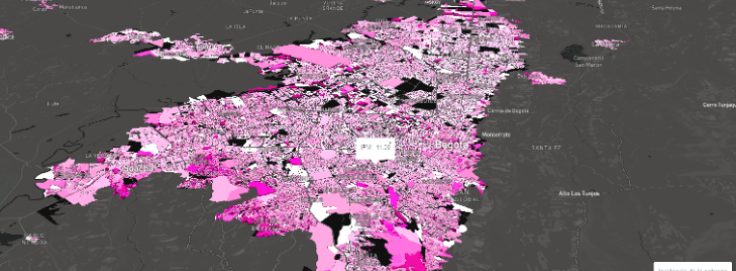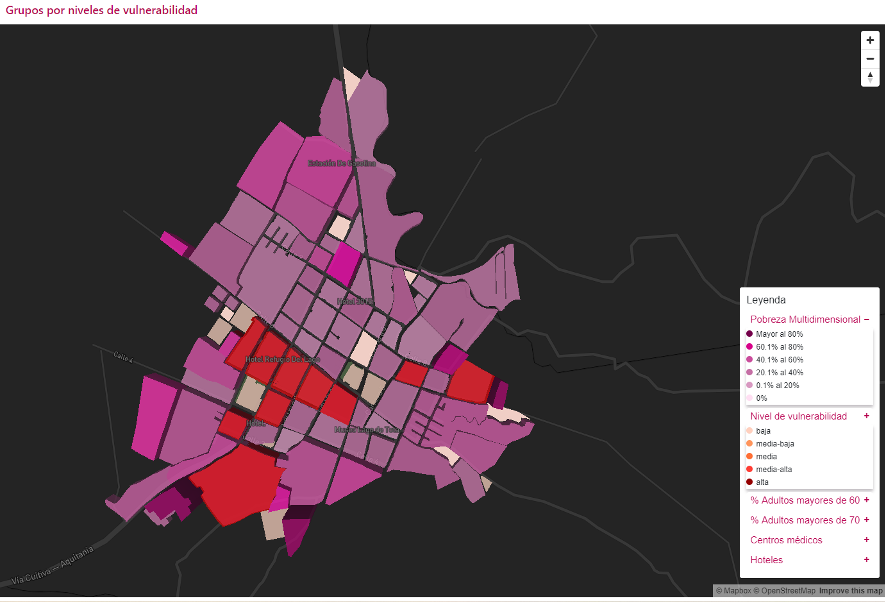
Search
Using the MPI as a tool for crafting government responses to the Covid-19 pandemic

Juan Daniel Oviedo’s intervention in the MPPN conference call for the Americas. 7th April 2020
Compiled and organised by Felipe Roa-Clavijo
Background
‘We have very important challenges associated with uncertainty, but in that uncertainty, we wanted to take advantage of the work that Colombia has carried out since 2010 with the structuring of the MPI.’

Juan Daniel Oviedo.
These are the words of Juan Daniel Oviedo, the Head of the Colombian National Statistics Office (DANE). Just two years ago in 2018, DANE carried out the National Population and Housing Census which estimated the five dimensions and 15 indicators of Colombia’s MPI. This analysis is now being cross-checked and used as a critical tool for crafting and targeting the government’s response to COVID-19. In a country where informal work accounts for 45% of the population in urban areas and more than 60% in rural areas, there is a pressing need to target those who need it most in the midst of the pandemic.
Using MPI and other key information to respond to the crisis
Within the institutional and legislative framework of the Economic, Social and Ecological Emergency Decree issued in March 2020, we have used the indicators of the Multidimensional Poverty Index to target resources. Specifically, in those households and families that were not beneficiaries of conditional cash transfer programmes such as Families in Action or Youth in Action.
The 2018 Population and Housing Census allowed us to have information on 14 out of the 15 indicators that make up Colombia’s Multidimensional Poverty Index (MPI). This allowed us to complement the census information with administrative records to be able to cross-check indicators and calculate at the block level a set of deprivations along with multidimensional poverty levels.
This instrument is a very important targeting tool that the government is using to develop complementary unconditional strategies such as solidarity income. In other words, thanks to these statistical tools, complementary monetary transfers are being developed for those populations who depend on informal employment.
Thanks to the use of MPI georeferencing, the government has the opportunity to identify which households are deprived in health, education, and informal work. Thus, the government can focus on relevant public policies. The National Administrative Department of Statistics (DANE) together with the National Planning Department, has provided information from the census, economic and social surveys, and administrative records to the national government and municipal and departmental authorities to achieve effective targeting.
For instance, in Bogotá, we have visualised multidimensional poverty at the block level for the entire capital. The different intensities of colour allow us to determine which blocks have a higher prevalence of multidimensional poverty. This tool has been essential in establishing all the localised mitigation programs in the zones of the city that need it most.

MPI in Bogotá. Darker colour indicates a higher incidence of multidimensional poverty
Source: http://geoportal.dane.gov.co/visipm/
By cross-checking information from the census with administrative records, we are linking multidimensional poverty with health records to establish where and in which blocks we have households with a greater situation of vulnerability. This is defined in terms of the risk of the persons who live in each block to the virus due to the existence of intergenerational households, previous morbidities, and critical overcrowding. This highly sensitive information is extremely useful for mayors for targeting public health programs.
Using the distribution of multidimensional poverty, we can see directly how it manifests itself in vulnerability levels to the virus. Linking the MPI to previous morbidities – accessed through health records – generates information that has been extremely useful, and which exists for all the municipalities in the country.
Another example is in the very small municipality of Aquitania in the department of Boyacá. First, we can quickly establish how multidimensional poverty is distributed at the block level in different municipalities. Through this, we can assess the relative intensities of the MPI and how this multidimensional poverty is associated or not with the risks of the virus according to the different types of households that we were analysing.

Map with two layers: MPI and level of vulnerability. Darker colour indicates a higher incidence
Source: http://visor01.dane.gov.co/visor-vulnerabilidad/
Government response for poor and vulnerable people
Readily available information from the MPI and health records has allowed the government to implement a VAT refund strategy for households in poverty and vulnerability. In less than two weeks, between March and April, vulnerable families have been identified thanks to the use of this information. Also, we were able to integrate all the information from the 2018 Population and Housing Census with the administrative records of morbidity to establish previous morbidity factors together with epidemiological models.
The intervention included:
- Additional cash transfers for families and young people that are beneficiaries of the programmes Families in Action and Youth in Action
- Solidarity income: $160,000 COP for households that are not beneficiaries of any government programme, but are vulnerable and depend on informal jobs
- Food packages
- VAT refunds
Conclusion
Colombia’s MPI enables us to identify some of the pre-existing factors that increase the vulnerability of households facing Covid-19. Additionally, we can identify other characteristics of vulnerable households such as critical overcrowding conditions or the prevalence of intergenerational households. This information allows each mayor of Colombia to establish at the city level which areas need complementary campaigns to raise awareness of recommended sanitary practices and preventive measures in households.
Colombia is taking the opportunity to use the MPI as a targeting tool, especially for families that are not benefiting from conditional cash transfers. This has allowed the government to react quickly with all the complementary social assistance programs in just two weeks. Additionally, with all the administrative records, it has allowed the MPI information, augmented by morbidity information, to be useful for establishing contagion patterns and their disaggregation at the urban level in 1,122 municipalities in the country.
This article was published in Dimensions 10.
















